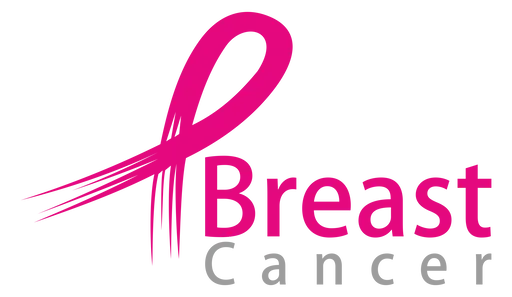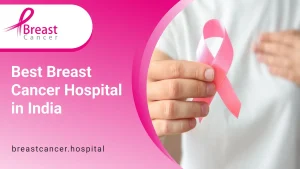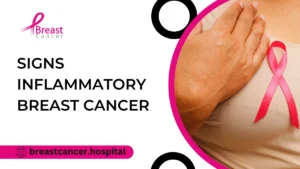Breast cancer is the most common cancer among women worldwide, affecting millions of individuals and families each year. While the topic can be daunting, raising awareness is key to saving lives. Through education, early detection, and empowering women to understand their risk, we can fight breast cancer together. With Breast Cancer Awareness 2024 upon us, it’s vital to spread the message and encourage everyone to take action.
What is Breast Cancer Awareness?
Breast cancer awareness is a global movement aimed at educating individuals about the risks of breast cancer, the importance of early detection, and the need for regular health checks. Every October, Breast Cancer Awareness Month sheds light on this cause, promoting screenings, self-exams, and making sure women know the signs of breast cancer.
Awareness campaigns strive to bring attention to the disease, reduce stigma, and encourage early diagnosis, all of which increase the chances of successful treatment. In 2024, these efforts will be more critical than ever as the world continues to recover from the pandemic’s impact on health services.

Why Breast Cancer Awareness is More Important in 2024
The effects of the COVID-19 pandemic have delayed regular mammograms and screenings for many women. This delay may have led to missed or delayed diagnoses. That’s why Breast Cancer Awareness 2024 will focus even more on encouraging women to return to regular health screenings and mammograms. Early detection is the best defense against breast cancer, and getting back on track with screenings can make all the difference.
Key Facts About Breast Cancer:
- 1 in 8 women will develop breast cancer in their lifetime.
- Early detection can improve survival rates significantly.
- Routine mammograms can catch cancer before it becomes symptomatic.
- Self-exams and knowing the signs of breast cancer are essential preventive tools.
The Breast Cancer Risk Factors
Understanding your breast cancer risk factors can help you take proactive steps toward prevention. Some risk factors are out of your control, while others can be modified through lifestyle changes. Being aware of these factors is a powerful tool in reducing the likelihood of developing the disease.
Non-Modifiable Risk Factors:
- Age: Women over 50 are at greater risk.
- Family History: Having a close relative with breast cancer increases your risk.
- Genetics: Inherited mutations in genes like BRCA1 and BRCA2 significantly raise the risk.
- Gender: While breast cancer can occur in men, women are at a much higher risk.
Modifiable Risk Factors:
- Alcohol Consumption: Drinking alcohol raises estrogen levels and increases breast cancer risk.
- Obesity and Inactivity: Higher body weight, especially post-menopause, has been linked to breast cancer.
- Hormone Replacement Therapy: Certain hormone therapies after menopause can increase risk.
Understanding these risk factors can motivate individuals to adopt healthier lifestyles and stay vigilant with screening practices.
The Role of Mammogram Screening in Early Detection
One of the most effective tools in the fight against breast cancer is mammogram screening. Mammograms are low-dose X-rays of the breast that can detect tumors that are too small to be felt by hand, allowing for earlier diagnosis and treatment. Regular screening is recommended for women aged 40 and older, or even younger for those with a higher risk.
Key Benefits of Mammogram Screening:
- Detects cancer early when it is most treatable.
- Can identify tumors before symptoms appear.
- Reduces the mortality rate of breast cancer by 20-40% for women aged 50 to 69.
Many women feel anxious about mammograms, but the discomfort is minimal compared to the life-saving benefits. With modern technology, mammogram screening are quick and highly accurate. Make it a priority to schedule regular screenings and encourage loved ones to do the same.
How to Take Action for Breast Cancer Awareness 2024
The Breast Cancer Awareness 2024 campaign is a perfect opportunity to take action. Whether you’re a survivor, a loved one, or simply someone who wants to support the cause, there are several ways to get involved:
- Schedule a Mammogram: Early detection is the best defense against breast cancer. Don’t delay your mammogram. If you haven’t had one, now is the time.
- Promote Awareness: Share information on social media, talk to friends and family, and wear pink throughout October to show support for the cause.
- Donate or Fundraise: Many organizations rely on donations to fund research, provide support services, and increase awareness. Participate in fundraisers, walks, or events.
- Practice Self-Exams: In addition to scheduling regular mammograms, practice monthly breast self-exams to stay familiar with the look and feel of your breasts. Early signs of breast cancer often include lumps, dimpling, or changes in texture.
The Power of Prevention
Taking preventive action can significantly reduce your risk of breast cancer. Although you can’t change certain risk factors, adopting a healthier lifestyle and staying proactive about your health are essential steps. Here are a few things you can do today to lower your risk:
- Exercise regularly: Physical activity can help regulate hormones and maintain a healthy weight, both of which reduce the risk of breast cancer.
- Eat a balanced diet: Focus on whole foods, including vegetables, fruits, and lean proteins. Limit processed foods and sugar, which can increase inflammation in the body.
- Limit alcohol consumption: If you drink alcohol, limit yourself to no more than one drink a day.
- Stop smoking: Smoking is linked to a number of cancers, including breast cancer.
Risks of Over-Awareness: A Double-Edged Sword
While Breast Cancer Awareness 2024 plays a pivotal role in helping individuals understand the disease, too much focus on the risks can inadvertently cause anxiety and fear. The rise in awareness should be paired with facts and resources to mitigate confusion.
Key Risks of Over-Awareness:
- Increased Anxiety: Constant exposure to information about breast cancer Information can make some individuals overly concerned about their health, even when there is no immediate risk.
- Confusion and Misinformation: In the age of social media, not all information regarding breast cancer risk factors is reliable. This can cause confusion about symptoms and risk management.
- False Sense of Urgency: Overemphasizing rare risks can lead people to believe they are at immediate risk when, in fact, they might not be.
For Breast Cancer Awareness 2024, the goal should be to create balanced and informative content that encourages individuals to take the necessary steps toward health checks and screenings without causing undue worry.
Early Detection of Breast Cancer: The Key to Survival
The importance of early detection cannot be overstated when it comes to improving the survival rate of breast cancer. The earlier the disease is detected, the higher the chances of successful treatment.
Why Early Detection Matters:
- Improved Survival Rates: With early diagnosis, treatments like surgery, radiation, and chemotherapy can be more effective.
- Less Aggressive Treatments: Early-stage cancers are often easier to treat with less invasive procedures, reducing overall treatment costs and recovery times.
- Peace of Mind: Early detection through mammogram screening and self-exams provides peace of mind and allows for proactive health management.
Key Methods for Early Detection:
- Mammogram Screening: A mammogram is one of the most reliable methods for detecting breast cancer Information in its early stages. Regular mammogram screening is essential, especially for women over 40 or those with a family history of breast cancer.
- Self-Examination: Monthly self-exams allow individuals to monitor any changes in the breast tissue, such as lumps, skin changes, or pain, which could indicate the need for further examination.
- Clinical Examinations: Annual check-ups with a healthcare provider, including a clinical breast examination, are recommended to detect any abnormal changes that may not be visible during self-exams.
Steps to Reduce Breast Cancer Risk:
- Know Your Family History: If breast cancer runs in your family, you may be at a higher risk. Knowing your genetic background can help you take preventive measures.
- Exercise Regularly: Physical activity can reduce the risk of developing breast cancer by maintaining a healthy weight and regulating hormones.
- Limit Alcohol Consumption: Drinking alcohol increases the risk of breast cancer. Reducing intake can lower your risk.
Conclusion
Breast cancer is a global challenge that impacts millions, but through awareness, early detection, and proactive health measures, we can make a significant difference. As Breast Cancer Awareness 2024 approaches, it’s vital that each of us plays a part whether by scheduling a mammogram, encouraging loved ones to get screened, or spreading awareness through our communities. Knowledge is power, and by understanding the risk factors and benefits of early detection, we can take meaningful steps toward reducing the impact of breast cancer.




